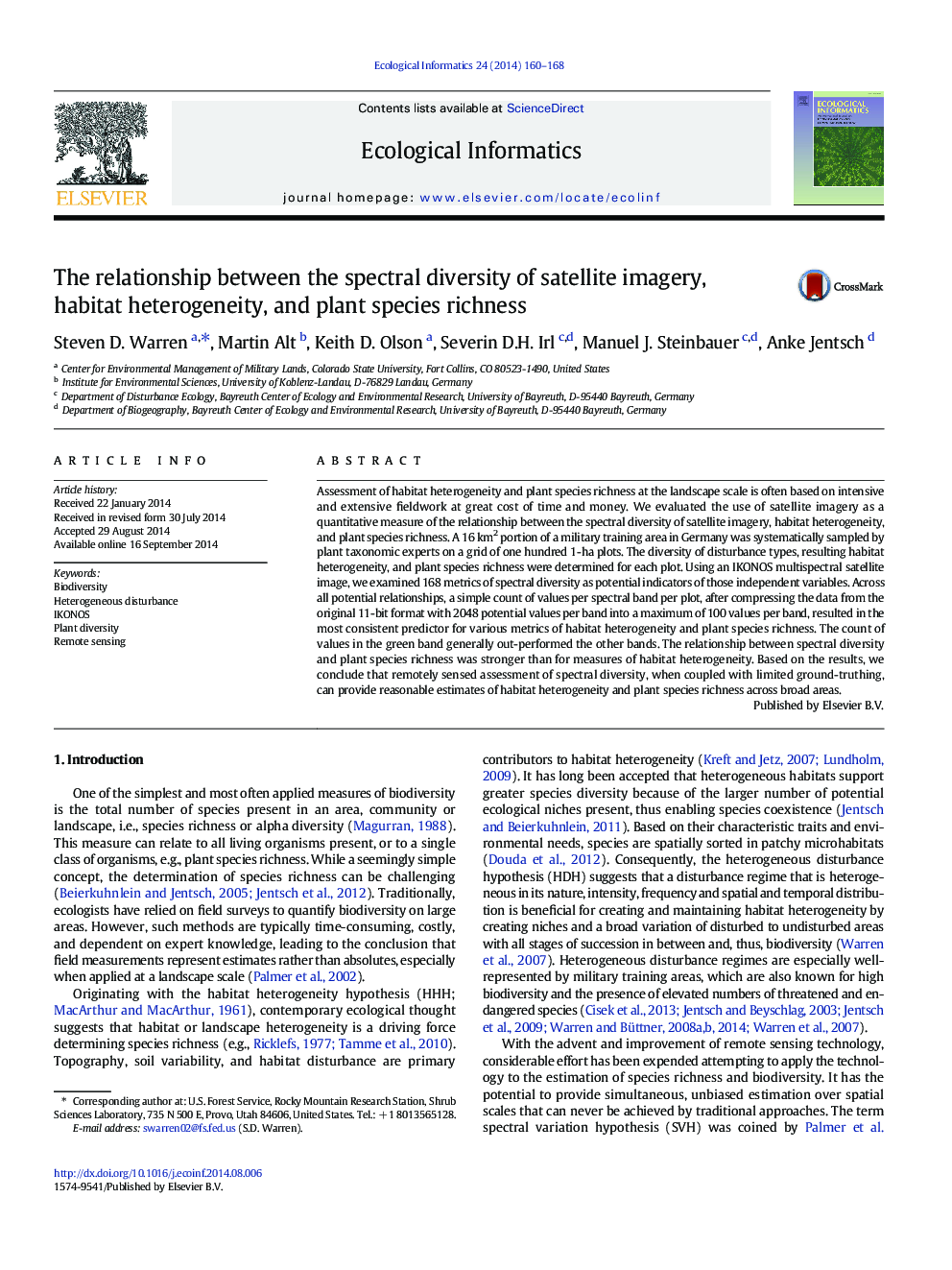| Article ID | Journal | Published Year | Pages | File Type |
|---|---|---|---|---|
| 6295912 | Ecological Informatics | 2014 | 9 Pages |
Abstract
Assessment of habitat heterogeneity and plant species richness at the landscape scale is often based on intensive and extensive fieldwork at great cost of time and money. We evaluated the use of satellite imagery as a quantitative measure of the relationship between the spectral diversity of satellite imagery, habitat heterogeneity, and plant species richness. A 16Â km2 portion of a military training area in Germany was systematically sampled by plant taxonomic experts on a grid of one hundred 1-ha plots. The diversity of disturbance types, resulting habitat heterogeneity, and plant species richness were determined for each plot. Using an IKONOS multispectral satellite image, we examined 168 metrics of spectral diversity as potential indicators of those independent variables. Across all potential relationships, a simple count of values per spectral band per plot, after compressing the data from the original 11-bit format with 2048 potential values per band into a maximum of 100 values per band, resulted in the most consistent predictor for various metrics of habitat heterogeneity and plant species richness. The count of values in the green band generally out-performed the other bands. The relationship between spectral diversity and plant species richness was stronger than for measures of habitat heterogeneity. Based on the results, we conclude that remotely sensed assessment of spectral diversity, when coupled with limited ground-truthing, can provide reasonable estimates of habitat heterogeneity and plant species richness across broad areas.
Related Topics
Life Sciences
Agricultural and Biological Sciences
Ecology, Evolution, Behavior and Systematics
Authors
Steven D. Warren, Martin Alt, Keith D. Olson, Severin D.H. Irl, Manuel J. Steinbauer, Anke Jentsch,
